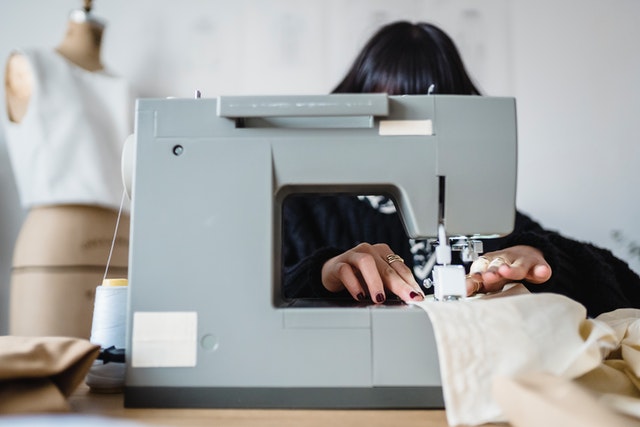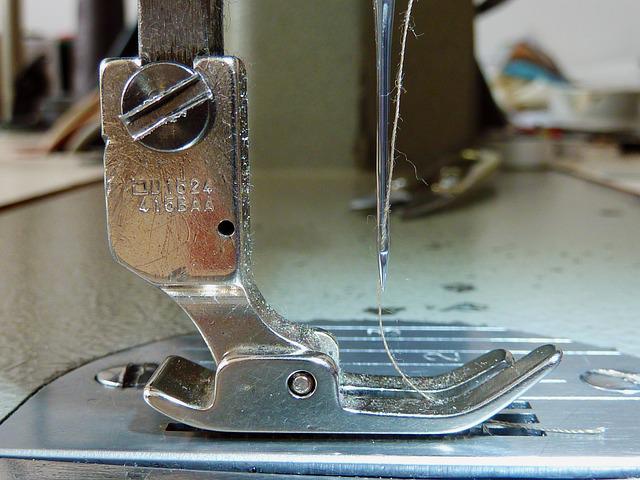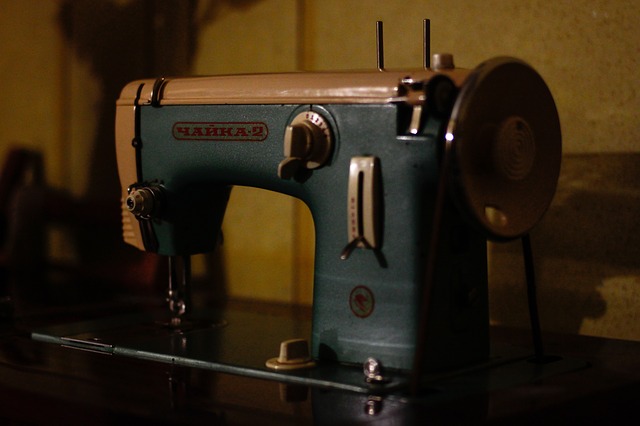How To Properly Take Care of Your Sewing Machine at Home Easy?
Sewing machines have become household items, especially since they are relatively cheap. However, sewing machines require a lot of maintenance, especially at home.
If you want to know how to properly care for your sewing machine at home easily, follow these simple steps.

How To Properly Take Care of Your Sewing Machine at Home Easy
Sewing machines are no longer complicated devices. They are now very user-friendly and require minimal maintenance. The same cannot be said for their owners, though.
For example, if you don’t care about the essential maintenance of your machine from time to time, you risk damaging it.
This could result in costly repairs or even the machine breaking down completely.
Sewing machines are handy tools, but they also require proper care. To ensure your machine lasts for years, follow these few basic steps.
Clean your machine after every use.
Cleaning is essential to maintaining your sewing tool; however, some people overlook this step. After all, cleaning your machine isn’t as difficult as it seems!
You need to give it a good clean with warm, clean water once a week. You should ensure that your machine is free from dust and other particles.
You can also use a sewing machine manual to clean the machine, preventing damage to the parts. Remember not to let any liquid get into the motor area.
You can buy a specific cleaning kit or use dishwashing soap and water. Once you’re done cleaning, dry your machine thoroughly.
Don’t forget to wipe off the surface where you wiped away dirt and grease. This is important because it protects the leather cover from getting dirty.
Oil your machine regularly.
Another way to keep your machine working well is by oiling it regularly. There are two types of oils: machine oil and engine oil. Both protect your machine against dust, debris, and rust.
Also, both lubricate the moving parts of the machine.
Although sewing machine oil only needs to be applied occasionally, engine oil must be added more often.
Make sure that you apply the right amount of oil. Too much oil may cause flooding, damaging your machine’s seals.
On the contrary, too little oil results in excessive wear and tear. Therefore, use enough oil to maintain optimal performance; a couple of drops are enough.
If your machine has a reservoir filled with oil, you won’t necessarily need to add oil yourself. Instead, remove the lid and pour the necessary amount directly onto the parts.

If you don’t have any oil, you can purchase it online or at your local hardware store. Also, always clean your parts before applying oil. This prevents them from becoming sticky or clogged up when applying new lube.
If you own a vintage machine, it might not have been manufactured with regular oiling. In this case, you might benefit from using a special vintage oil. These kinds of oils are designed specifically for old machinery.
They were created to ensure that the mechanism works properly, and they help extend the life of your machine. Use this kind of oil based on the manufacturer’s instructions.
Remove lint and dust from around the needle area.
Lint and dust can accumulate around the needle area, causing your machine’s performance problems. To remove this build-up:
- Start unplugging your machine from the power source.
- Use a soft brush to dust off the area around the needle.
- Wipe down the area with a damp cloth.
- Be careful when threading the needle – if you do it wrong, you could damage the machine.
Threading the needle on your sewing machine can be tricky.
If you do it wrong, you could damage the machine. To thread the needle correctly, follow these steps:
Find the thread guide on the side of your machine and insert the thread into the guide.
-Hold onto the end of the thread and pull it towards the back of the machine.
-Thread the thread through the needle from front to back.
-Pull the thread through until there is a small loop at the end.
Tighten all screws and bolts every few months, mainly if your machine is used frequently
All screws and bolts should be checked and tightened every few months, mainly if the machine is used frequently. To do this:
- Unplug your machine and remove all attachments.
- Use a screwdriver to tighten all the screws and bolts.
- Be careful not to over-tighten them!
Replace the needle every few months.
The needle on your sewing tool pierces the fabric and creates stitches. Therefore, it’s essential to replace the needle every few months.
To replace the needle:
- Start by unplugging your machine and removing all attachments.
- Locate the needle clamp on the side of the machine.
- Open the clamp and remove the old needle.
- Insert a new needle into the clamp and tighten the clamp shut.
- Ensure the needle is inserted correctly – if
- Not, it could damage the machine.

Keep your machine in a cool, dry place.
When you’re not using your sewing machine, it’s essential to store it in a cool, dry place; don’t keep them somewhere in direct sunlight. This will help prevent rusting and other damage.
Ideally, keeping your machine in a dust cover when it’s not in use would be best. This will protect it from dust, lint, and other debris. If you don’t have a dust cover, you can make one from a pillowcase or an old towel.
Replace any broken or worn parts as soon as possible
If any parts of your sewing machine are broken or worn, replacing them as soon as possible is essential. Using a machine with damaged parts can cause more severe problems.
Run a few test stitches to make sure everything is working correctly
After you’ve finished cleaning and oiling your machine, running a few test stitches is good because testing is an integral part of adequately taking care of your sewing machine at home. This will help you catch any problems before they become more significant issues.
This will help ensure that everything is working correctly. If you notice any problems, take your machine to a professional for service.

Using a Sewing Machine Cover
It would help if you also considered purchasing a sewing machine cover to protect your machine during storage. Using a cover will help prevent scratches and dirt from getting on your machine while protecting it from outside elements because dust is the enemy of machinery,
In addition, the covers are easy to clean, making them ideal for a quick cleaning session.
Conclusion
Now that you know how to take care of a sewing machine at home easily, you can maintain it for years.
It doesn’t matter what brand or model your machine is; it’ll last forever with proper maintenance.
Remember that regular maintenance is essential to avoid expensive fixes or unexpected breakdowns. So get ready to put those skills to work!
Have fun sewing!




3 Comments